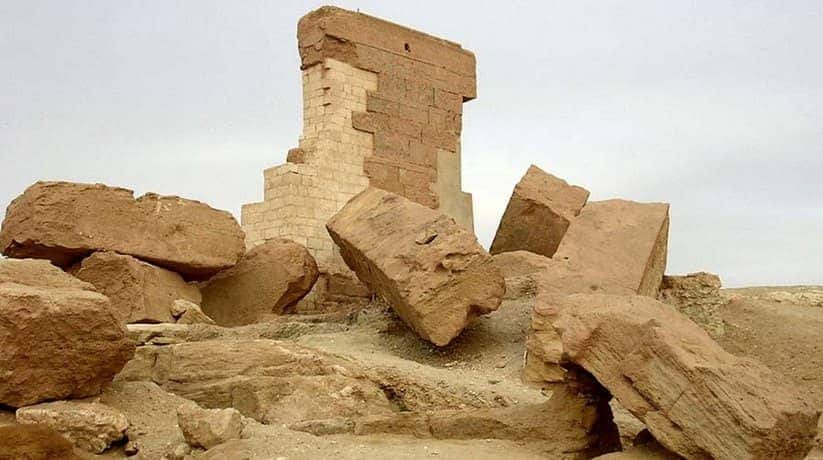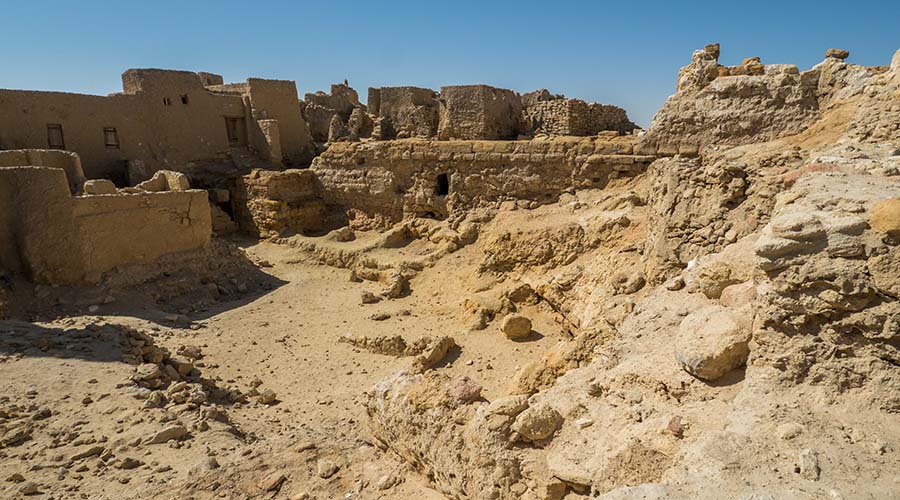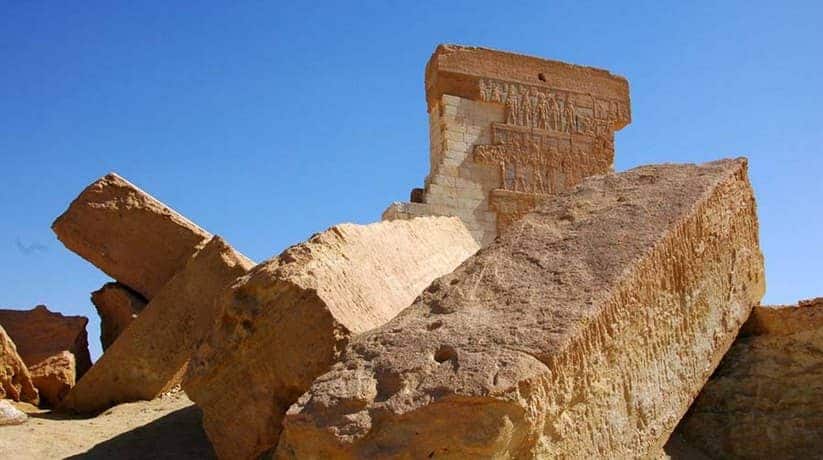Amun temple Siwa Oasis information, tours, prices and online booking
Amun temple Siwa Oasis in fact also known as Umm Ubaydah temple or Umm Ubayd temple. In fact, there are two temples dedicated to Amun in Siwa Oasis, Egypt. The most famous of these temples is Oracle Temple. The other one situated amidst a grove of trees a short distance from the rock of Aghurmi. In fact, the temple at one time joined to the temple of the Oracle by a causeway. Moreover, it formed an integral part of the rituals related to the Oracle and the god. Furthermore, the site marked by a large area of whitish ground. Only one wall stands today among these ruins, though near it is a number of huge stone blocks. All of these blocks seem to be inscribed, and in some places color remains visible.
In fact, the pyramid built in the 30th Dynasty. Moreover, it mentioned in the story of Alexander the Great’s visit to the Oasis. It was in fact after conquering Egypt. Until the beginning of the 19th century, a great part of the Amun temple Siwa Oasis still preserved. In 1811 an earthquake caused major damage to the site. Cailliaud, Drovetti and Von Minutoli visited the site between the years of 1819 and 1821. In fact, they found much of the temple standing. Though they recorded some blocks from the ceiling which fallen down and one of the temple walls leaning. Then, in 1897, one of the Ma’murs of Siwa placed gunpowder in the foundations of the temple. Moreover, he blew it up to obtain stones for the staircase of the police station. In fact, it was at Qasr Hassunah and for the construction of his own house.
More information about Amun temple Siwa Oasis:
Hence, what time and nature could not do, accomplished by an ignorant government official in a few minutes. Mostly, we know the plan of this temple from those made up by its 19th century visitors. It faced north, and surrounded by two girdle walls, the enclosure wall was square in plan. Though many parts of the temple already fallen by the early 19th century. Yet, the pronaos and the sanctuary still existed and in front of these there was a pillared hall. Within the enclosure wall, and in front of the Amun temple Siwa Oasis was an elevated area built of alabaster blocks. One of these, either an altar or a pedestal for a statue of the God Amun, decorated on its four sides. In fact, it is with a representation of Amun in the form of a human head with ram’s horns.
We have some idea of the arrangement of the scenes on the wall of at least the sanctuary. In fact, it is thanks to Von Minutoli. The opposite wall in the same chamber as the one still standing much resembled it. From his drawings, we know that the builder was King Nectanebo II, the energetic ruler of the 30th Dynasty. In fact, he is one of the most active builders in the late period of Egyptian history. On the wall which still stands, there is a long text at the top. In fact, it consists of fifty-one lines and three registers where various deities are depicted. In Von Minutoli’s drawing of the wall, we find a decoration which served as an upper frieze. It in fact is above the text. At the top was a repetition of the king’s cartouche which protected by the vulture goddess Nekhbet.
Further information about Amun temple Siwa Oasis:
Under it, a number of figures perform some of the ceremonies of the rite of “Opening of the Mouth”. It is in sunken relief. In fact, it is the beginning of the text of the same rite. Under the inscriptions there are three rows of figures. In fact, they all carved in high relief, and at the top we see the actual builder of the temple. His name was Wenamun, who was “The Great Chief of the Desert”. He wears an ostrich feather in his hair. On fact, it shows that he was of Libyan decent, and he was the ruler of the Siwa. In fact, it was when Amune temple Siwa Oasis built. Moreover, in the depiction he kneels before the god Amun, who sits inside a shrine. In fact, behind the ruler are seven deities.
Moreover, on the middle register nine deities once appeared, but now there are only eight. On the bottom register there are now only three deities depicted. Though in 1820 more figures were preserved. What most notable in these inscriptions is the text of the Rite of the Opening of the Mouth. It is more frequently found on papyri, on coffins or sometimes on the walls of tombs. In fact, it is since it connected with the burial ceremonies. However, the text does appear on mortuary temple or chapel walls. Therefore, Amun temple Siwa Oasis may served in some way as a funerary monument for Wenamun. In fact, his burial may not be far from this site. The inscriptions that Von Minutoli provides to us from now destroyed sections of the walls.
More details about the site:
The upper part of Wenamun with a feather in his hair, stands in front of a deity inside a shrine. In fact, the deity also wears a feather in his hair. It might suggest Libyan origin or at least a Libyan appearance. This might lead us to believe that this was probably the ancient god. In fact, the god who worshipped in Siwa before the supremacy of Amun. Unfortunately his name not preserved and there are no other similar scenes to find in the Siwa. It is unfortunate that Amun temple Siwa Oasis so destroyed today. In fact it obviously closely connected with the Temple of the Oracle. Doubtless, more information will one day surface about these two ruins. It is when Egyptologists finally decide that they are worth completely to excavate.
















